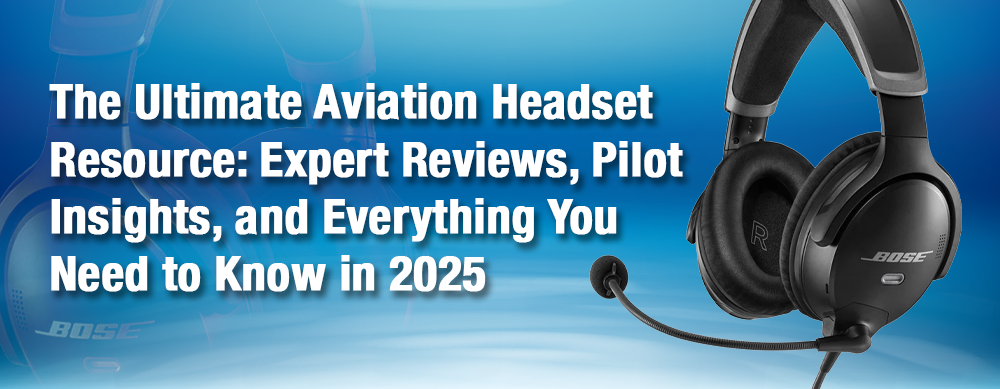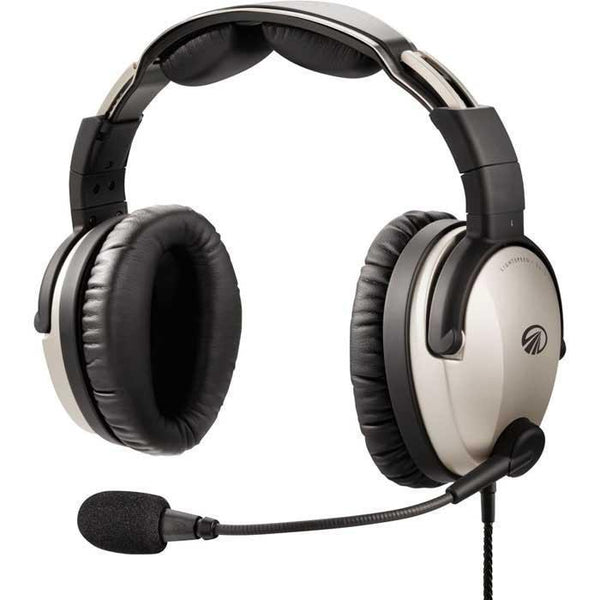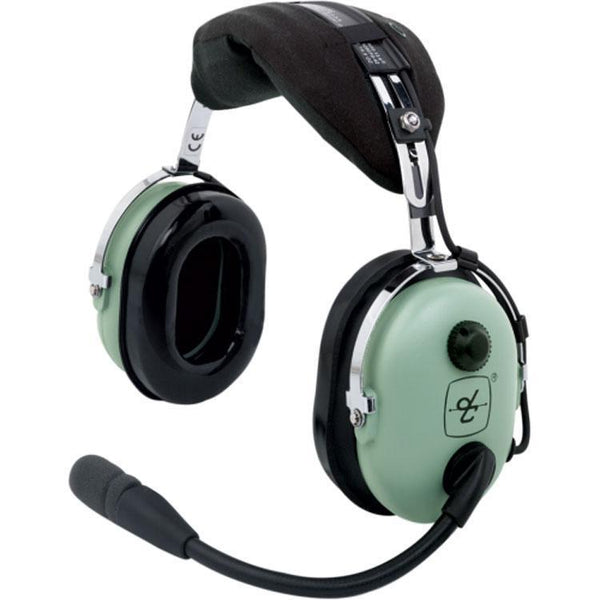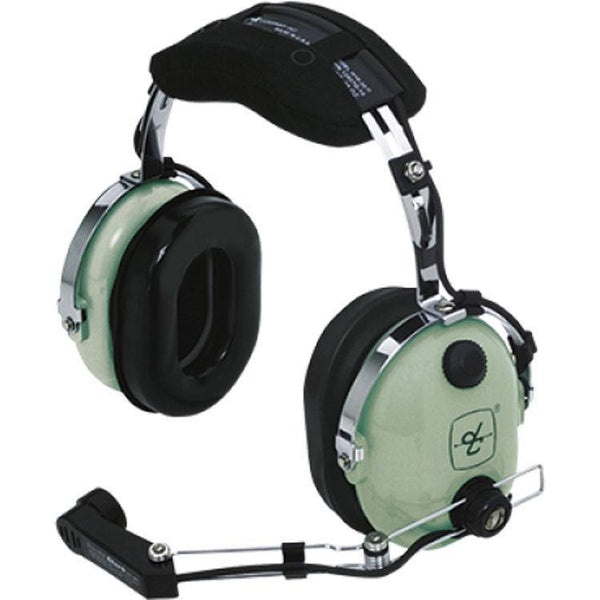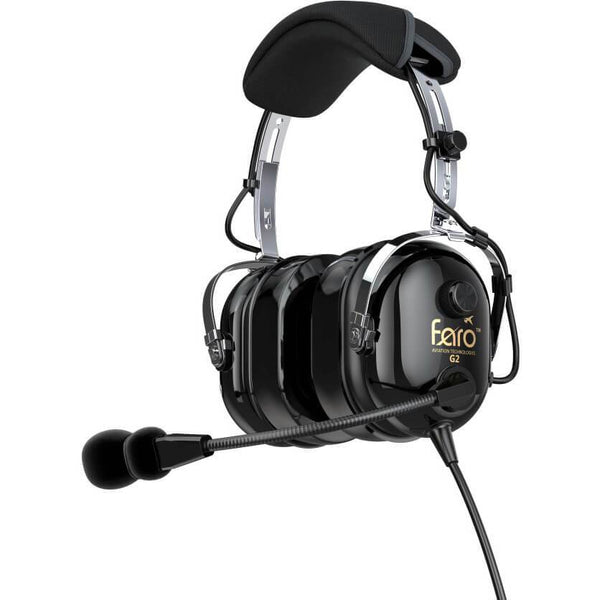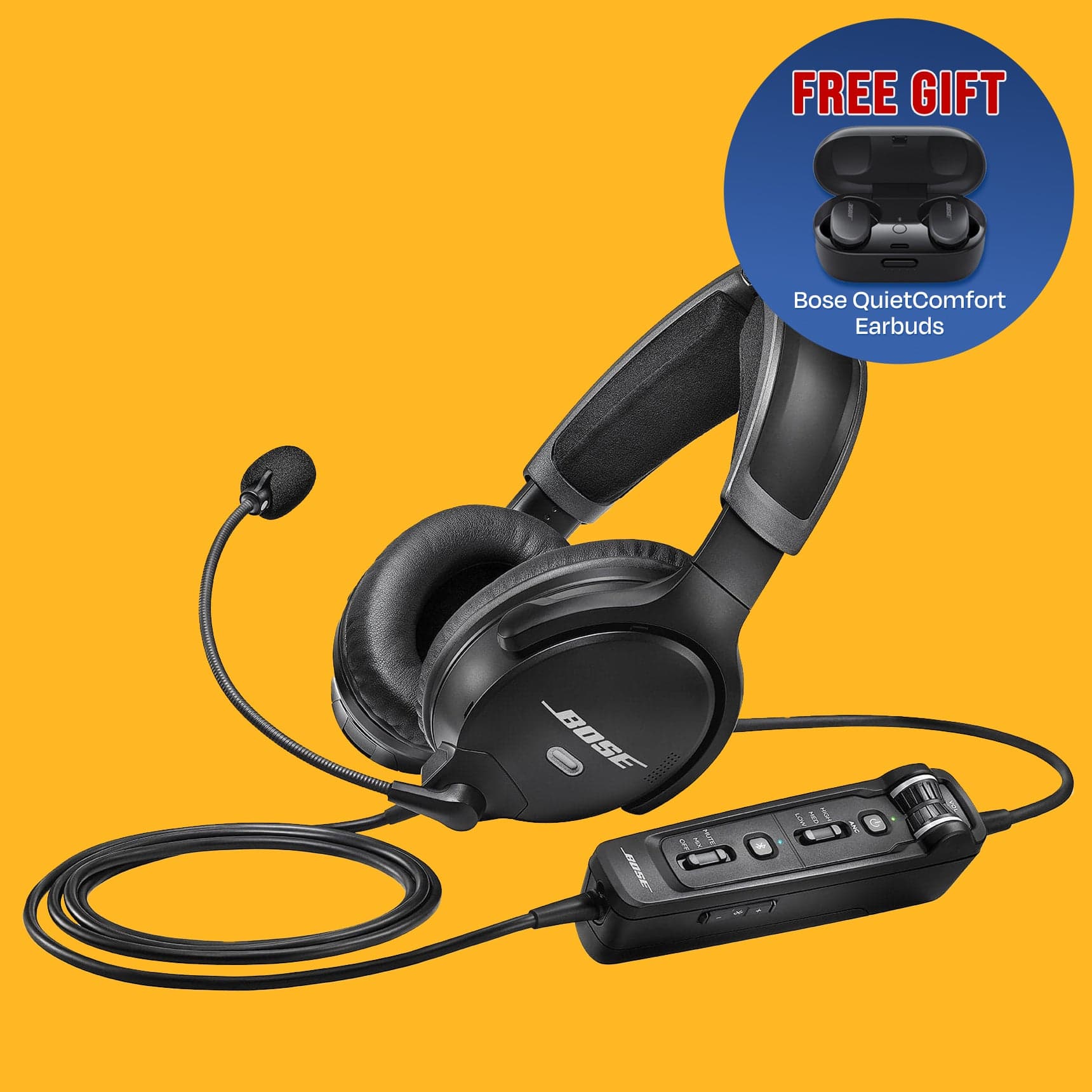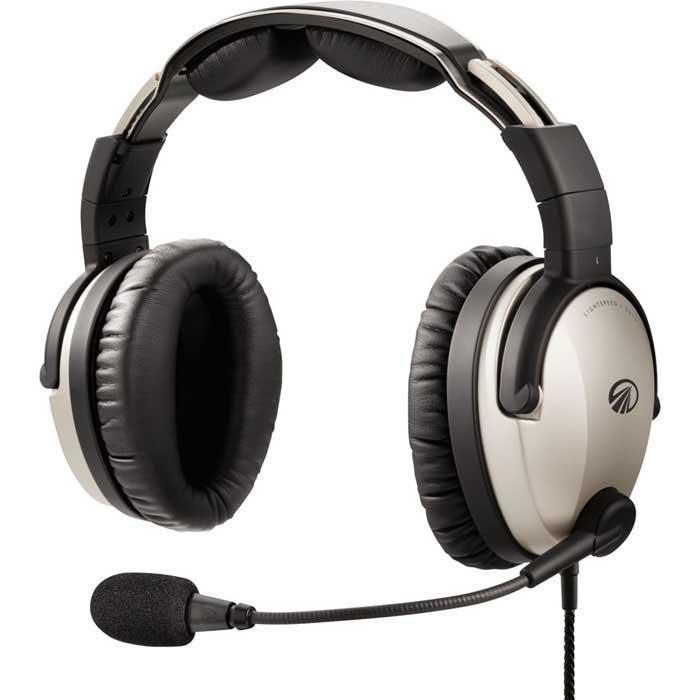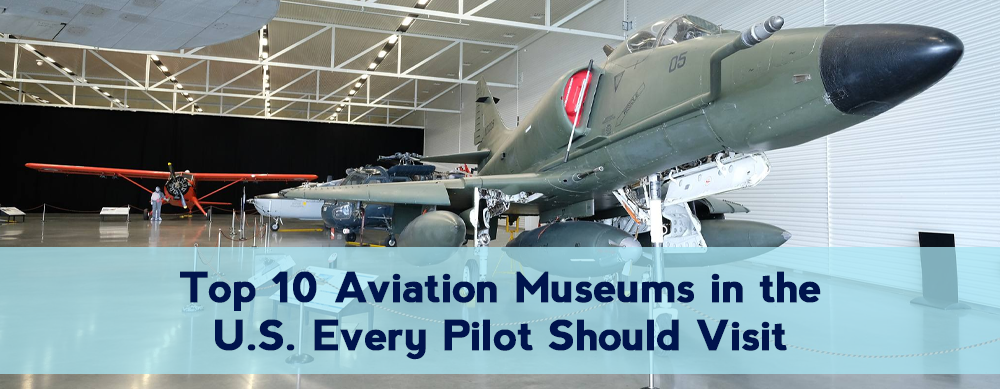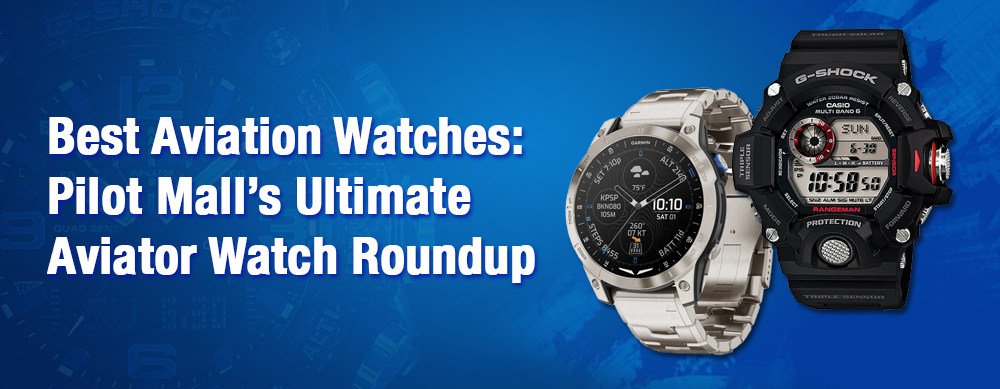Why Your Headset Choice Matters in 2025
Choosing the right aviation headset isn’t just about picking the most expensive model – it’s about finding what fits your flying habits, comfort needs, and budget. A good headset is essential equipment in any cockpit, ensuring you can hear air traffic control clearly and protecting your ears from engine noise. The noisy environment of an airplane (often 90-100+ dB) can lead to fatigue and even long-term hearing loss if you don’t have proper protection. That’s why pilots are passionate about their headsets – the right choice can make flying safer and more enjoyable, while the wrong one can leave you with headaches (literally). In 2025, there’s a huge range of headsets available, from premium ANR (Active Noise Reduction) models to affordable passive ones. This guide brings together expert reviews, technical insights, and real pilot stories to help you navigate the options and choose the perfect headset for your needs.

Table of Contents
- How Aviation Headsets Work: ANR vs. PNR Explained
- Expert Reviews: Top Aviation Headsets of 2025
- Headset Features That Really Matter (and Which Are Just Hype)
- Real Pilot Stories: What Headset Do You Fly With, and Why?
- Decision Matrix: Which Headset is Right for You?
- Care, Maintenance, and Longevity Tips
- Frequently Asked Questions
- Conclusion & Next Steps
How Aviation Headsets Work: ANR vs. PNR Explained
One of the first decisions when shopping for a headset is Active Noise Reduction (ANR) vs Passive Noise Reduction (PNR). Both aim to “turn down” the ambient noise, but they do it in very different ways:
-
Passive Noise Reduction (PNR): A traditional headset blocks noise simply by physically sealing out sound. Thick earcup padding (often foam or gel) and a strong clamping force create a barrier around your ears – like earmuffs. High-frequency noises (e.g. wind hiss) are largely absorbed or reflected by this barrier. The downside is that to block noise well, passive headsets often clamp tightly, which can become uncomfortable over long flights. Also, things like sunglasses or long hair can break the seal and reduce a passive headset’s effectiveness. Many classic headsets – such as the David Clark models – use passive noise reduction and are known for their durability and simplicity.
-
Active Noise Reduction (ANR): ANR headsets use electronics to cancel noise, especially low-frequency noise like engine drone. Tiny microphones inside the ear cups pick up incoming noise, and the headset instantly generates an opposite “antinoise” signal to nullify the sound wave. In essence, the crest of the engine noise wave is met with a trough from the headset’s speaker, and they cancel each other out – resulting in a dramatic reduction of bass rumble. ANR is most effective on those low frequencies (propeller and engine noise) that cause fatigue and hearing loss over time, while higher-frequency sounds (like voices or airflow) are less affected. Importantly, ANR headsets still let you hear what you need to – like voices and changes in engine pitch – since they focus on constant background noise. ANR technology has been a game changer for pilots: as one AOPA author put it, “ANR is a night and day difference over passive protection”, especially on long flights. The trade-offs? ANR headsets require power (batteries or aircraft power) and are often pricier and slightly heavier due to the electronics.
In summary, PNR headsets are like sturdy earplugs – no batteries needed but can feel like a vise grip – whereas ANR headsets actively counteract noise, greatly reducing fatigue on long flights. Many modern headsets actually combine both methods (good passive seal plus active cancellation). For most pilots, ANR has become the gold standard for loud cockpits. But if you only fly occasionally or on a tight budget, a passive headset can absolutely do the job for shorter stints. In the next section, we’ll review the top headsets of 2025 across the spectrum, from high-end ANR models to affordable passives.
Expert Reviews: Top Aviation Headsets of 2025
Aviation headsets in 2025 come in all flavors – premium models packed with tech, rugged mid-range units, and budget-friendly staples. Here are the top picks that consistently rise to the top, along with their key features, pros, and cons:
Best High-End Aviation Headsets
When you’re flying long hours or professionally, investing in a high-end headset pays dividends in comfort and sound quality. The premium tier is dominated by two brands: Bose and Lightspeed.
Bose A30 Aviation Headset (Around $1,299)
The Bose A30 is the newest flagship from Bose, launched in 2023 as the successor to the famous A20. This around-ear ANR headset has set a new benchmark for comfort and noise cancellation. Bose reduced clamping force by 20% compared to the A20, so the A30 feels gentler on the head during those 4+ hour flights. The A30’s digital ANR offers three selectable modes – High, Medium, Low – allowing pilots to tailor noise cancellation to their aircraft (High for a noisy piston, Low for a quiet jet). In High mode, the A30 arguably has the best noise canceling on the market, practically silencing a piston-engine drone so you can catch ATC calls with ease. Another innovative feature is the “tap-to-talk” mode: double-tapping an earcup temporarily turns off ANR on that side so you can hear someone next to you without removing the headset.
Comfort and build are top-notch: at ~14.2 oz, the A30 is lightweight, and it uses plush leather ear seals that mold to your head. Many pilots report they can wear it all day without hot spots. Bose also built in all the bells and whistles: Bluetooth for phone/audio (with auto-priority so radio calls mute your music), an electret noise-canceling microphone for crystal-clear transmissions, and an auto-shutoff to save battery. Two AA batteries give about 45 hours of use (or 25-30 hours if Bluetooth is in constant use). The A30 is FAA TSO-C139a certified, meaning it meets the strict technical standards for professional aviation use. Bose’s legendary customer service and a 5-year warranty add peace of mind. The only downside is price – at roughly $1,299 – but for many, the investment is worth it. One pilot even called the A30 “a game-changer… providing unmatched clarity and reducing fatigue on long flights”. If you’re a commercial or serious GA pilot, the Bose A30 is often considered the ultimate headset.
The Bose A30 high-end ANR headset offers top-tier noise cancellation and comfort for demanding pilots.
Lightspeed Zulu 3 (Around $949)
Long before the A30 arrived, Lightspeed’s Zulu series was a favorite among pilots, and the Zulu 3 remains one of the best high-end headsets, now at a slightly lower price point. The Zulu 3 is all about ruggedness and comfort. It’s built with stainless steel and magnesium hardware (as opposed to the Bose’s mostly plastic frame), giving it excellent durability without a weight penalty. In fact, at about 13.9 oz, the Zulu 3 is a tad lighter than the A30. The construction feels solid – even the kevlar-reinforced cables are designed to resist tangles and wear. Lightspeed engineered the fit for long-haul comfort: the Zulu 3 exerts about 15% less side pressure than its predecessor, and it has large, plush ear seals that accommodate glasses well. Pilots who wear glasses often comment how the Zulu’s seal isn’t broken by their frames – a huge plus over some other headsets. Many users report being able to wear the Zulu 3 for 4-6 hour flights with no headache or discomfort.
In terms of noise cancellation, the Zulu 3 is on par with Bose’s older A20 and very close to the A30. Its ANR is excellent across a broad frequency range, aided by Lightspeed’s “Microport” technology that achieves consistent cancellation of engine and wind noise. Some pilots describe the Zulu 3 as “spooky quiet” – you might find you barely hear your engine at cruise. It might lack the A30’s fancy multi-mode ANR, but in practical use the Zulu is superbly quiet. It also includes Bluetooth for music/phone and an input jack, so you won’t miss any connectivity features. One of the Zulu 3’s biggest draws is value: at around $949 street price, it’s significantly cheaper than the Bose A30 while delivering 90% of the experience (and some argue it even beats Bose in comfort). Additionally, Lightspeed backs it with an industry-leading 7-year warranty, reflecting confidence in its durability. If you want a top-tier ANR headset but also want bang for your buck, the Zulu 3 is a top contender. (Lightspeed also released the Delta Zulu in late 2022 – a higher-tech sibling of the Zulu 3 that adds features like a built-in carbon monoxide detector and personalized hearing profile via a smartphone app. The Delta Zulu runs about $1,299, so it competes in price with Bose. It’s an exciting option for safety-conscious pilots who like cutting-edge features – e.g., you can get real-time CO alerts and even record cockpit audio through its app. We won’t dive deep here, but it’s worth a look if those extras appeal to you.)
Other Notables in High-End: Two other headsets sometimes considered in the premium category are the Bose ProFlight Series 2 and David Clark ONE-X. The Bose ProFlight Series 2 is an in-ear ANR headset designed for the relatively quieter cockpits of airliners and jets – it’s extremely lightweight and rests partly in the ear canal instead of over-ear. It’s loved by many professional pilots in turbine aircraft because it’s barely felt on the head, though it’s not as quiet as an A30 in a noisy piston plane. The David Clark ONE-X is DC’s flagship ANR headset (around $995) featuring Bluetooth and excellent build quality, offering an alternative for those who prefer the David Clark brand’s styling and reliability. In general, though, Bose and Lightspeed dominate the high-end market in 2025, and you can’t go wrong with either the A30 or Zulu 3 as your top-of-the-line choice.
Reliable Mid-Range Options
Not every pilot needs the latest $1000+ headset. The mid-range ($400–$800) offers some fantastic headsets that balance performance, durability, and price. These are great for private pilots, flight instructors, or anyone who flies regularly but doesn’t want to splurge on the absolute top-end.
David Clark H10-13.4 (Approx. $360)
You can’t talk about aviation headsets without mentioning David Clark. The iconic green David Clark headsets have been a GA staple for decades – and the H10-13.4 is perhaps the most beloved model. This is a passive headset (PNR), not ANR, but it boasts an impressive passive Noise Reduction Rating (NRR) around 23-24 dB. In other words, it can reduce ambient noise by roughly 24 decibels just through its thick foam/gel ear seals and firm fit. The H10-13.4 is known for being built like a tank – it’s not the lightest (about 18 oz) and not the fanciest, but it will last for years with minimal care. Flight instructors often favor these because students can be rough on headsets, and a DC can take the abuse. Comfort-wise, it has a soft headpad and gel ear cushions; most people find it comfortable for short to medium flights, though after 3-4 hours the clamping can cause some fatigue (a common trade-off with passive sets). Importantly, many pilots appreciate that the H10-13.4 just works – no batteries to fuss with, no Bluetooth to pair, nothing to turn on. You plug it in and you have reliable communications. If ANR isn’t a priority for you, this David Clark offers tremendous value and is often recommended for pilots starting out or as a dependable backup headset.
Telex Airman 8+ (Around $565)
While not as commonly seen in small GA cockpits, the Telex Airman 8+ is hugely popular among airline and corporate pilots. This is an ultra-lightweight headset designed for pressurized turbine airplanes (like airliners or business jets) which are quieter to begin with. The Airman 8+ weighs only ~4 oz (since it rests on-ear), and uniquely it features battery-free ANR. That means its Active Noise Reduction is powered by the aircraft’s mic bias power – you never need to worry about batteries dying at 35,000 feet. The ANR is tuned for the lower noise levels of jet cockpits and is excellent at cutting out the remaining rumble and background noise. Pilots love that you can wear the Airman 8+ for an 8-10 hour duty day with virtually no neck strain. As one airline pilot noted, not having a battery box dangling or needing charging is “awesome” for all-day use. The trade-off is that in a noisy piston aircraft, an Airman 8+ won’t perform like a Bose A30 – it simply doesn’t have the same level of passive isolation or heavy-duty ear seals. However, for its intended environment (or for pilots who prioritize weight above all), the Airman 8+ is a winner. It’s also FAA TSO C-139a approved, meeting the requirements for airline use. If you fly professionally in transport category aircraft, definitely consider this or similar lightweight headsets. (Telex’s older Airman 750 and 850 models were classics in the airline world; the 8+ builds on that legacy with added ANR.)
Lightspeed Sierra (Approx. $749)
The Sierra is Lightspeed’s “little brother” to the Zulu. It’s an ANR headset that offers a lot of Lightspeed quality at a mid-range price. While it doesn’t have all the premium magnesium components of the Zulu 3, it still provides very effective noise cancellation (comparable to a first-generation Zulu or older Bose) and includes Bluetooth audio. The Sierra is slightly heavier and has a bit more clamping force than the Zulu 3, but it’s a solid choice for a private pilot who wants ANR without paying top dollar. (And with Lightspeed’s 5-year warranty, it’s built to last too.)
Other mid-range mentions: David Clark’s DC ONE-X (around $995) we mentioned earlier could fit here – it’s an excellent ANR headset with Bluetooth, from the trusted DC brand. Ultimately, the mid-range segment has something for everyone – whether you favor passive durability or affordable ANR – and it’s often where value-conscious pilots find their perfect headset.
Best Budget-Friendly Headsets (Under $500)
You don’t need to spend a fortune to get a good, serviceable headset. Plenty of pilots (especially students and renters) start out with budget headsets that cost a few hundred dollars or less. These models might not have fancy electronics or exotic materials, but they deliver clear communication and hearing protection for your early flight hours. Here are some of the top budget picks in 2025:
David Clark H10-30 – Around $319
A slightly older sibling of the H10-13.4, the H10-30 is a classic passive headset that has been a flight school workhorse for ages. It’s actually a bit heavier and clamps a bit tighter than the 13.4, but it’s nearly indestructible. Many student pilots use H10-30s because they’re affordable and can handle being tossed around in the flight bag. Noise reduction is good (NRR in the low 20s dB). If you don’t mind basic foam ear seals (which you can upgrade to gel), this headset will reliably get you through training. Think of it as the “Honda Civic” of headsets – not fancy, but utterly reliable.
Faro G2 PNR – Approximately $169
The Faro G2 PNR is often cited as one of the best cheap headsets that still checks all the boxes. For under $200, it offers a 26 dB passive noise reduction rating – which is on par with David Clark. It’s relatively lightweight and comes with thick silicone-gel ear cushions for comfort. The Faro G2 even includes some modern touches like dual volume controls and an audio input for music. Pilots who have used it report that it’s surprisingly comfortable for a budget set, though perhaps not for very long flights (being passive, it still clamps firmly). It’s an ideal choice for student pilots, passengers, or as a spare headset. As one reviewer put it, “great headset at a great price… very good passive noise reduction, very comfortable, and clear sound”. The main cons are that the all-plastic construction isn’t as durable as more expensive sets, and some users found it a bit heavy over time. But backed by Faro's 3-year warranty, the G2 PNR is hard to beat for affordability.
Entry-level headsets like the Faro G2 PNR provide around 26 dB of passive noise attenuation in an affordable, lightweight package.
Pilot USA PA-1169T – Around $150
If you’re really watching your budget, Pilot USA offers several no-frills headsets that come in well under $200. The PA-1169T is a basic passive headset that often appeals to flight students. It has a no-frill design but includes a noise-canceling electret mic and enough comfort for short training flights. At this price, you won’t get fancy extras, but you will get the essentials: clear audio and a volume control. It’s also quite lightweight, which is a plus for smaller heads. Consider this one a “starter headset” – you can log your initial hours on it and decide later if and when to upgrade.
PilotMall “Sound Silencer” Passive Headset – About $159
This is a competitively priced house-brand headset that aims to deliver a bit more noise reduction and comfort without breaking $160. It features cushioned ear seals and an adjustable headband, boasting passive noise attenuation comparable to more expensive models. For students in particular, it offers a sweet spot between ultra-cheap and mid-range – a solid training companion that you won’t feel bad about tossing in your flight bag. While it lacks Bluetooth or ANR, it’s all about reliability and bang for buck.
Pilot USA Pro Max (Passive) with Bluetooth – Around $269
One interesting offering for budget-conscious pilots is the idea of a passive headset with Bluetooth. The Pro Max is exactly that – it foregoes ANR to keep cost down, but includes a Bluetooth module so you can pair your phone or iPad for music/phone calls. This is great for student pilots who might want to listen to some music on long solo cross-countries or use an app for audio checklists, but who aren’t ready to invest in a full ANR set. The Pro Max still relies on passive noise reduction (thick padding, etc.), and its noise attenuation is decent if not remarkable. Essentially, you’re paying a bit more than other passive sets in this class in exchange for wireless audio capability. If that’s a feature you value, it’s one of the most affordable ways to get it.
Budget headset caveats: Remember that with these sub-$300 headsets, you may eventually outgrow them. They’re perfect for learning and occasional use, but if you start flying very frequently, you’ll likely crave the comfort and quiet of a better model. The good news is many of these hold their resale value reasonably well among new students, or they can serve as reliable backups later on. Also, if you fly with friends or family, having an extra inexpensive headset for your passenger is always a good idea.
Headset Features That Really Matter (and Which Are Just Hype)
Shopping for headsets can be confusing – every brand advertises a laundry list of features. Let’s break down the features that truly impact your flying experience versus those that are nice-to-have (or just marketing fluff):
- Noise Reduction Rating (NRR): This number (in dB) tells how much noise a headset can theoretically reduce. It’s a key spec because protecting your hearing is job #1. For passive headsets, an NRR around 20–26 dB is common. ANR headsets often list two values (passive alone vs. ANR on) – for example, 23 dB passive and 30+ dB with ANR active. Don’t get too caught up in tiny NRR differences, but do note that ANR models significantly cut low-frequency noise that passive NRR doesn’t fully reflect. A headset that’s “quiet” will reduce your fatigue and improve communication clarity.
- Comfort (Clamping Force & Weight): Arguably as important as noise reduction is how the headset feels. A headset can have amazing ANR, but if it gives you a headache from clamping your jaw, you won’t want to wear it. Comfort is subjective, but look at weight (lighter is better, especially <16 oz for over-ear sets) and clamping force. Many premium headsets advertise reduced clamping force (e.g. Bose A30’s 20% clamp reduction vs A20, or Zulu 3’s 15% less squeeze vs prior model). Larger ear cups and more padding also distribute pressure better. If possible, try on headsets – what fits one person (especially concerning head size or if you wear glasses) might feel tight to another. Comfort also includes things like how much heat builds up under the ear cushions and if the headband is nicely padded. Bottom line: a comfortable headset is worth its weight in gold on a long cross-country.
- Microphone Quality (Noise-Canceling Mic): All modern aviation headsets for pilots use a noise-canceling microphone (usually electret type) so that your voice comes through clearly without cockpit noise. This is pretty standard, but it’s good to ensure your headset has an electret noise-canceling mic (virtually all of the ones we discussed do). The difference is noticeable: a good mic will filter out engine/background noise and transmit just your voice. Unless you’re looking at an extremely cheap no-name headset, you’re likely covered here. Just remember to keep the mic’s foam windscreen on and replace it if it gets worn – that also affects clarity.
- Bluetooth and Audio Inputs: Bluetooth connectivity has shifted from a luxury feature to fairly common in mid-range and high-end headsets. This allows you to pair a phone or tablet to listen to music, make phone calls on the ground, or get audio alerts from apps (like ForeFlight). If you enjoy music while cruising or need to make business calls between legs, Bluetooth is very nice to have. That said, some purists consider it a distraction – it’s optional. Many headsets also have a wired 3.5mm AUX input as an alternative to Bluetooth. Hype check: Bluetooth doesn’t affect the core function of the headset (protecting hearing and communications), so consider it a convenience feature, not a necessity for safe flying. One related feature is audio priority or “mixing” – better headsets will lower or mute music when an ATC transmission comes in, which is important so you don’t miss calls. This is often mentioned in marketing (e.g., Bose’s Bluetooth module mutes music on incoming comms automatically).
- Battery Type and Power Features: For ANR headsets, check what kind of batteries they use and any power-saving features. Most use either 2 AA batteries or a rechargeable lithium pack. Battery life can range from 20 hours (on some older ANR sets or with Bluetooth always on) up to 40-50 hours on efficient models. Features like auto-shutoff (which powers down the ANR after a period of inactivity) are very handy to prevent accidental battery drain. Some headsets, like the Telex Airman series, cleverly use aircraft power so no battery is needed. If you fly with ANR, plan to carry spare batteries and swap them at the first low-battery warning – you’ll want full noise cancellation available (flying an ANR headset with dead batteries reverts it to passive mode, which can be a rude awakening in noise levels!).
- Durability and Build Quality: This is where brand reputation often comes in. David Clarks are renowned for lasting 20+ years. Lightspeed uses metal in high-stress areas (headbands, pivots) on the Zulu for longevity. Bose has a more plastic build to save weight but generally is very well-engineered and supported by excellent service if parts break. If you fly every day (flight instructors, ag pilots, etc.), durability is crucial – look for headsets with robust strain reliefs on cables, user-replaceable wear parts (ear seals, headpad, cord assemblies), and good warranty support. Sometimes simpler passive sets outlast complex ANR ones just because there are fewer failure points. Also consider water resistance if you fly open-cockpit or helicopters (some headsets are advertised as having moisture resistant electronics or optional covers).
- TSO Certification: You might see mention of “TSO’d” headsets. TSO (Technical Standard Order) certification from the FAA means the headset meets certain minimum performance and quality standards (for example, airline operations often require TSO-approved headsets for crew use). Bose A30, Telex Airman 8+, and some others carry TSO-C139a approval. For a general aviation private pilot, TSO isn’t a must-have – many excellent headsets aren’t formally TSO’d but work perfectly. However, if you aspire to airline or commercial cockpits, investing in a TSO-approved model ensures you’re cleared to use it on the flight deck.
- Extra Features & Innovations: Some newer headsets tout things like app integration (e.g., Lightspeed Delta Zulu’s app can record communications and show CO levels), built-in CO detectors (Delta Zulu’s biggest unique feature), or adjustable ANR modes (Bose A30’s selectable modes). There are also niche features like audio sharing (so two headsets can listen to one music source), bass/treble EQ adjustments via app, or even fit customization (personalized audio profiles for your hearing curve). These innovations are cool and can add value, but prioritize the fundamentals first: comfort, noise reduction, and reliability. A CO detector in your headset, for instance, is a great safety bonus – but you could also carry a standalone CO monitor in your plane. So consider such features icing on the cake. The same goes for aesthetics (custom colors, etc.) or minor weight differences – focus on reviews and real-world reports to judge what will truly improve your experience vs. what’s mostly marketing.
In short, what really matters in a headset is: does it protect your hearing well, can you wear it for the duration of your flights without pain, and does it reliably deliver clear communication? Features like Bluetooth, apps, or fancy materials are secondary to those core needs. Now, let’s hear from real pilots about what they use and why.
Real Pilot Stories: What Headset Do You Fly With, and Why?
There’s nothing like real-world experience to shed light on what makes a headset great. We gathered a few insights from pilots at different stages – from student flyers to seasoned airline captains – about their headset choices and what they’ve learned:
- The Student Pilot: Jenna is a student pilot on a budget. “I started with a borrowed David Clark from my flight school, but I quickly bought my own David Clark H10-30. It’s old-school, but it’s one less worry during training – I know it’s going to work every time I plug in. The clamping pressure was a bit much at first, but I bent the headband slightly and that helped. Sure, I’d love a fancy Bose eventually, but for now, the DC lets me focus on flying, not fiddling with gadgets,” she says. Jenna’s strategy is common – start simple. Many students hold off on expensive ANR headsets until they’re sure flying is for them or until they start cross-country flights where the quiet and comfort become more valuable.
- The General Aviation Enthusiast: Rahul is a private pilot who flies $100 hamburgers on weekends in a Cessna 172. He recounts his upgrade journey: “I flew with a passive headset (a Rugged Air RA200) for my first 50 hours. It was fine, but on longer flights I’d get headaches from the noise and clamping. I decided to splurge on a Lightspeed Zulu 3, and wow, I’ll never go back unless I’m forced to. The ANR makes the cockpit so quiet that I realized how tiring the noise had been. Also, I wear glasses – with the Zulu, the ear seal isn’t broken by their frames. Now even a 3-hour flight is comfortable. It was a lot of money, but ‘buy once, cry once’ as they say.” Rahul’s experience highlights how a premium ANR headset can reduce fatigue and improve enjoyment. Once you experience a truly quiet cockpit and a headache-free fit, it’s hard to fly without it.
- The Flight Instructor: Mike is a CFI who’s in the plane for hours every day. He uses a David Clark H10-13.4 for instructing. “Why a David Clark? Because it’s bulletproof,” Mike laughs. “Students have dropped it, yanked the cords, spilled coffee on it – it keeps working. I’ve replaced the ear seals a couple of times and the mic muff, but that’s normal wear. I also carry a spare cheap headset for the student if theirs fails. For myself, after 5 or 6 hours of flying in a day, I do sometimes wish I had ANR to cut the noise. I’m eyeing the Bose A30. But until this DC dies, it’s hard to justify switching – it’s like an old friend at this point.” Many instructors stick with tried-and-true equipment like David Clark, prioritizing durability and low cost of ownership. They often value simplicity – no batteries to manage – and they know exactly how the headset behaves in all conditions.
- The Professional Airline Pilot: Sofia flies an Airbus A320. She swears by her Telex Airman 8+. “In the airline cockpit, we value light weight and clarity. The Telex is so light I forget I have it on, and it doesn’t give me ‘headset hair’ on those four-leg days,” she jests. “It’s also nice not worrying about batteries at all. The noise level up at the flight deck is low enough that I don’t need a big over-ear headset. One of my colleagues uses the Bose ProFlight in-ear set, and he loves it, but my Airman’s on-ear style works fine for me. If I jump in a Cessna on the weekend, though, then I’ll grab my old over-ear headset because the Telex isn’t made for high noise.” Sofia’s comments show how use-case matters: in a quiet pressurized jet, an ultra-light headset with moderate ANR is ideal. In contrast, that same headset might be overwhelmed by the noise of a propeller aircraft. Professional pilots also appreciate when a headset meets their company’s equipment specs (TSO certified) and integrates with cockpit audio panels nicely.
- The Long-Haul GA Cruiser: Lastly, consider Alex, an owner of a Beechcraft Bonanza who frequently flies 4-5 hour trips. He uses a Bose A30 for himself and keeps a Lightspeed Sierra for his co-pilot or passengers. “My rule: PIC (pilot in command) gets the best headset!” he jokes. “Really though, on a long flight, a top-notch ANR is not a luxury, it’s a necessity for me. The reduction in noise keeps me alert and less tired at the end of the day. I invested in the Bose A30 when it came out – I had an A20 before. The A30’s new features like selectable modes and slightly less clamping are noticeable. I use the Medium ANR setting in my Bonanza; it’s plenty and saves some battery life. I let my friends use the Lightspeed Sierra which is a solid ANR set too, just a bit older tech. We can all talk through the intercom easily, no shouting. Everyone arrives fresh.” Alex touches on a key point: reducing pilot fatigue. A quieter cockpit and comfortable headset contribute directly to better pilot performance and safety on long journeys. It’s also a reminder that your passengers’ comfort matters – a screaming engine and no headset is a recipe for never asking you to take them flying again!
These stories echo a few common lessons:
- Once pilots experience quality ANR, they rarely want to go back to passive. The difference in noise and fatigue is that significant.
- Durability and trust in your headset are huge. Pilots stick with brands that have proven themselves under real-world conditions (hence the loyalty to David Clark or Bose service, etc.).
- Different flying missions call for different headsets. One size doesn’t fit all – a student might prioritize cost, an airliner pilot prioritizes light weight, a private owner doing long trips prioritizes top-tier ANR. Identify with the pilot profile that matches you to help guide your choice.
Speaking of which, in the next section we’ll present a decision matrix to match pilot profiles with headset types.
Decision Matrix: Which Headset is Right for You?
Every pilot’s needs are a bit different. To narrow down your choices, use this simple guide based on what kind of flying you do and what matters most to you:
- If you’re a student pilot or flying very casually on a tight budget: Start with an affordable, tough passive headset. Good choices include the David Clark H10-30 or H10-13.4 (durable and reputable) or the Faro G2 PNR (very budget-friendly with decent performance). These will cost $150–$350. They lack ANR, but you likely don’t need ANR for short training flights, and you can save money for other gear. Once you’re flying longer distances or more often, you can upgrade. Why: New students are often hard on headsets; a passive model can take the beating and you won’t stress over battery life or tech while learning the basics.
- If you’re a private pilot who flies weekends and occasional cross-countries: Consider investing in a mid-range ANR headset or a used high-end model. For example, a Lightspeed Sierra (new) or a used Bose A20/Lightspeed Zulu could be in the $500–$750 range. You’ll appreciate the noise cancellation on those 2-3 hour $100 hamburger flights, and the Bluetooth for music/ATIS is nice. Alternatively, a top passive like the David Clark H10-13.4 is a fine choice if you don’t mind the noise and want to save money. Why: Flying 50-100 hours a year, you’ll really feel the difference an ANR makes in reducing fatigue. It’s a quality-of-life upgrade for the hobby pilot.
- If you’re a long-distance VFR/IFR cruiser or aircraft owner: Go for the premium ANR headset if it’s within budget. Headsets like the Bose A30 or Lightspeed Zulu 3 truly shine here. Over hundreds of hours, they provide comfort and protection that cheaper sets can’t match. Protecting your hearing for the long run is worth the higher upfront cost. Also consider that these often come with longer warranties and top-notch support. Why: As pilot-in-command on serious trips, you want the best situational awareness – which means hearing ATC clearly and not being drained by noise. High-end headsets also tend to have useful extras like multiple ANR modes or smarter audio that are beneficial on complex flights.
- If you’re an instructor or fly in tough conditions (open cockpit, aerobatics, etc.): You might prioritize rugged passive headsets or less expensive ANR that you won’t cry over if it breaks. In an open cockpit, ANR might struggle, so a good passive with a helmet or earplugs might be the way to go. As an instructor, durability and an affordable backup headset are key. David Clark models are a common choice here for their legendary robustness. Why: For high-wear-and-tear environments, gear that can be easily fixed or replaced is more practical than a $1,300 headset that might get smashed or rained on. Plus, no worries about students accidentally draining your battery box.
- If you’re flying professionally (corporate or airline): Look at sets that emphasize all-day comfort and required certifications. For corporate GA, a Bose A30 or Lightspeed Zulu 3 will serve you well (many pro pilots use them). For airline flight decks, consider the Telex Airman 8+ or Bose ProFlight Series 2 since they are designed for that environment (lightweight, TSO-approved, moderate ANR suited to turbine noise levels). Why: As a pro, you might be wearing the headset for 8+ hours with few breaks, so even minor pressure or weight differences add up. Plus, complying with company equipment rules (TSO) and not worrying about battery changes in critical phases of flight are important factors.
- If you need a headset for passengers or occasional use: A basic passive like the Faro G2 or Pilot USA models works great. You can hand it to a friend joining you on a short flight and know they’ll be able to hear and speak just fine. It’s also a nice courtesy to have an extra headset rather than making someone use earplugs or go without. Why: Passengers won’t appreciate a $100 hamburger flight if they’re subjected to full engine noise or a painful headset. A simple spare headset ensures everyone can communicate and enjoy the ride, without you spending a fortune for something that sits in the backseat pocket most of the time.
Of course, personal preferences play a role too. Some pilots simply prefer the feel of a certain brand or have specific needs (e.g., must have Bluetooth music, or must work with a hearing aid, etc.). But generally, consider your use case and budget: invest where it counts (long-term hearing protection and comfort if you fly a lot) and save where you can (features you won’t use often).
Care, Maintenance, and Longevity Tips
A good aviation headset is an investment – and with proper care, even a mid-range headset can last for many years (there are pilots still using 20-year-old David Clarks!). Here’s how to keep your headset in top shape:
- Keep it Clean: After each flight, wipe down your headset. Use a soft cloth to remove sweat and dirt from the ear seals, headband, and microphone. If you’ve had a long, hot flight, the ear cushions may be damp – take them off and let them air out. Avoid using alcohol or harsh cleaners on the headset, as these can degrade the plastics and leather over time. A little mild soap on a damp cloth is fine for occasional cleaning of the ear pads. Also, if you share headsets (or use a rental), consider using disinfectant wipes (aviation-grade, no bleach) to sanitize the ear seals and mic windscreen.
- Inspect and Replace Wear Parts: Certain parts of a headset wear out and should be replaced periodically. The ear seals often go flat or start cracking after a year or two – replacing them restores the full noise attenuation and comfort (many manufacturers recommend replacing ear cushions every 12-18 months). Gel seals especially can leak or harden over time. Likewise, the microphone windscreen (the foam cover) should be changed every 6 months or so, or if you notice it’s torn or stiff. If your headset has a foam headpad or fabric cover on the headband, keep an eye on it – those can usually be replaced as well. David Clark, Bose, Lightspeed and others sell relatively inexpensive refurbishment kits with new ear seals, headpads, and mic muffs. Swapping these in can make an old headset feel almost new again.
- Cable Care: One of the most common ways headsets fail is via cable damage. Always unplug by holding the plug, not yanking the cord. When storing your headset, coil the cable loosely – don’t wrap it tightly around the headset as that can strain the wires. Check the cable for any signs of fraying or kinks. If you find a weak spot, some manufacturers sell replacement cable assemblies, or you might need a repair service to fix it. Treat the cable gently and it will greatly extend the life of your headset.
- Battery Best Practices (for ANR Headsets): If you use a battery-powered ANR headset, always carry spare batteries on trips. A good habit is to replace batteries at the first sign of low power (many ANR headsets have a blinking LED or tone that indicates low battery). Also, remove batteries if you won’t use the headset for a while – this prevents corrosion from a battery that might leak in storage. Keep the battery compartment clean; if you do see any corrosion on the contacts, you can gently clean it with a cotton swab and a tiny bit of isopropyl alcohol (with the headset off and batteries out). For rechargeable headsets, follow the manufacturer’s guidance – typically, you don’t want to leave them uncharged for months or run them completely dead too often.
- Proper Storage: Store your headset in a cool, dry place. Ideally use the case that came with it or a dedicated headset bag for protection. Avoid leaving your headset in extreme heat (like a car in summer or a closed cockpit under the sun) – high temperatures and UV light can deteriorate plastics, rubber, and electronics. If you live in a humid area or fly floats where things get damp, toss a small silica gel pack in your headset case to absorb moisture. When packing your headset, don’t cram it at the bottom of a flight bag under heavy tools or books – the ear cups and boom can bend or crack under stress. Treat it with a little care during transport.
- Periodic Check-ups: Now and then, do a functional check: plug in your headset and verify both earphones work and the mic is clear. Spin the volume knobs to see if they’re scratchy (dust can cause static, which a bit of electronic contact cleaner can fix if you know how, or have a shop handle it). Ensure the mic boom stays in place where you position it – if it’s loose, some have a tension adjustment or you might tighten a screw. Small issues caught early can prevent big problems later.
- Don’t Ignore Comfort Issues: If you find your headset becoming uncomfortable (more than when new), it might be due to wear. Flattened ear seals or a compressed headband pad can make the clamp feel worse – replacing those parts can restore comfort. Sometimes just readjusting the headband size or how the ear cups articulate can improve the fit if something’s gotten misaligned. Headsets like Lightspeed Zulu have slightly flexible headbands you can tweak for fit; David Clarks can be gently bent to reduce clamp. Consult your manual or manufacturer’s guidance on adjusting fit if needed.
By following these maintenance tips, you’ll ensure clear communications and top performance from your headset every flight. A little care goes a long way – as the saying goes, take care of your equipment and it will take care of you. Plus, when it comes time to upgrade, a well-maintained headset has better resale value.

Frequently Asked Questions
Q: What’s the best headset for professional pilots?
A: Many professional pilots (airline and corporate) gravitate toward the Bose A30 or Lightspeed Zulu 3 for over-ear headsets – both offer superb noise cancellation and all-day comfort, which is crucial in a professional setting. The Bose A30 in particular has become popular for its combination of top-tier ANR and light weight (one pilot described it as reducing fatigue on long flights like nothing else). For airline flight decks, lightweight on-ear models like the Telex Airman 8+ or Bose ProFlight Series 2 are also common, since those cockpits are quieter and pilots value not having a bulky headset. Ultimately, “best” comes down to personal preference (some pros prefer the clamping of an over-ear ANR even in jets, others love the barely-there feel of an in-ear set). But you’ll almost never go wrong with Bose or Lightspeed’s top models given their reputation in the industry.
Q: Are there any good headsets under $500?
A: Absolutely. David Clark’s passive headsets (like the H10-13.4, usually ~$360) are legendary performers under the $500 mark – they are comfortable for moderate flights and built to last. On the ANR side, the Lightspeed Sierra often retails in the $749 range new – it delivers excellent ANR for the money. For even less, the Faro G2 PNR (around $169 new) and Pilot USA headsets (~$150-$300 range) prove that you can get a perfectly serviceable, clear-sounding headset without breaking the bank. They may not have the ultra-quiet ANR or premium feel, but they do the job. Many flight schools use mid-price headsets in the $300 range for their rental fleets because they strike a balance of cost and durability.
Q: Do student pilots need noise-canceling (ANR) headsets?
A: Not necessarily – most student pilots start with passive headsets and do just fine. During training, flights are often 1-2 hours, and you’re so focused on learning that a bit of extra noise isn’t usually the top concern. A good passive headset like the David Clark H10-30 can serve a student pilot well through all their lessons. That said, if a student can afford an ANR headset early on, it certainly won’t hurt – it can reduce fatigue and make it easier to hear your instructor and ATC, potentially aiding learning. Some instructors even say having ANR helps students with radio communication because they can discern words more clearly in the beginning. But plenty of pilots earned their certificates with passive headsets. It really comes down to budget – if buying an expensive headset is a financial stretch, it’s perfectly fine to wait and perhaps reward yourself with an ANR model upon completing your private pilot license.
Q: Why is noise cancellation important?
A: Noise-canceling headsets reduce fatigue and help you stay focused during flights, especially in noisy environments. They’re particularly helpful during long flights where constant engine noise can wear you down. Noise cancellation – whether passive or active – is important for two big reasons: protecting your hearing and reducing fatigue. The sound levels in a small aircraft cockpit can easily exceed 95 dB. Without a headset, you risk noise-induced hearing loss, which is irreversible. On top of that, continuous noise is fatiguing, forcing your brain to work harder to pick out communications and stressing your body. Pilots report that with good noise-canceling headsets, they feel noticeably less tired after a flight, which translates to safer flying. In short, noise cancellation is important because it keeps you healthier and safer as a pilot.
Conclusion & Next Steps
No matter what your flying experience level is, finding the right aviation headset can make a world of difference in your cockpit experience. It’s an investment not just in gadgetry, but in your comfort, health, and ability to communicate effectively as a pilot. The key is to match the headset to your needs: your typical flight duration, noise environment, budget, and personal preferences.
Remember, a headset is a very personal piece of gear. Use resources like this guide, user reviews, and pilot forums to narrow down your choices, but if possible, try before you buy. As technology advances, we’re seeing features like improved digital ANR and integration with other cockpit technologies. It’s an exciting time, but a high-quality headset doesn’t become obsolete. Focus on what adds value to your flying.
Fly safe and hear well! By choosing the right headset and taking good care of it, you’ll ensure that every flight – from your first solo to your thousandth hour – is a more enjoyable and safe adventure.
Interested in Finding More Pilot Gear?
Our guides are designed to help!
- 8 Best Pilot Gear Bags You Can Trust to Survive A Grueling Flight Schedule
- 12 Pilot Flight Bag Essentials You Should Always Be Carrying
- The Best Student Pilot Essentials: A Comprehensive Guide
- 15 Amazing Birthday Gift Ideas for Aspiring Pilots
- The Best Flight Bag for Any Budget
- ANR Headset Comparison: Which Offers the Best Value?
Did you find this article helpful?
Do you think we missed an important headset or feature? Let us know in the comments below!

